This beautiful, leafy herb is essential in Mexican cuisine and is easy to grow in the home garden. It’s a cool weather plant, but it’s also nose-to-tail edible (so to speak): leaves, stems, and seeds are all edible. Learn how to plant and care for this amazing herb, and take advantage of its many culinary forms.
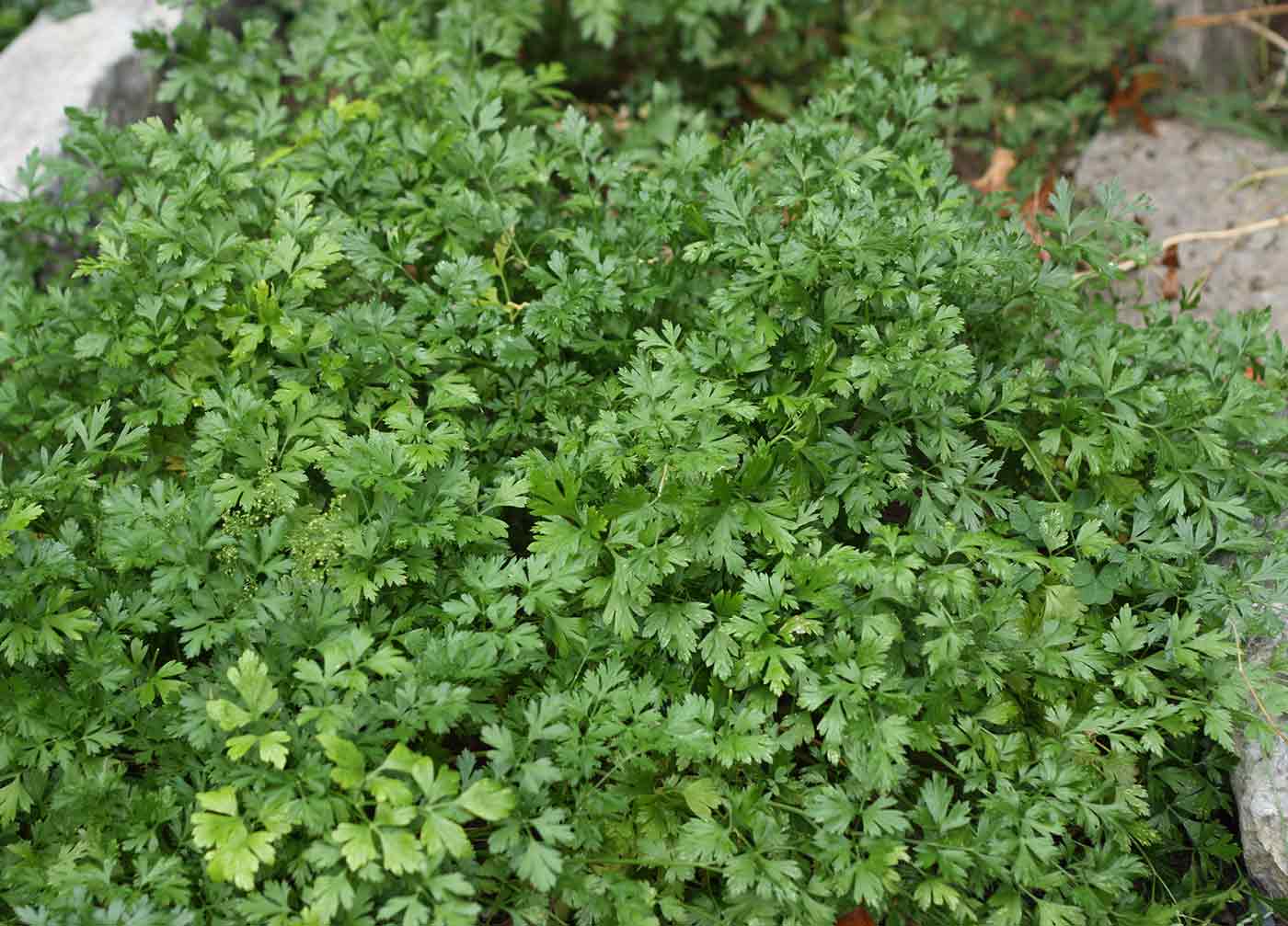
Cilantro (Coriandrum sativum) is one of my favorite, must-have herbs to grow every year in my herb garden. Its leafy green growth habit is verdant and attractive in a raised bench or bordered bed.
And as a cool-weather herb, it’s usually the first edible to sprout from my outdoor garden (along with perennial tarragon and chives) and turbocharges my anticipation for the growing season’s vegetables. It’s also very much a no-fuss, low-maintenance plant.
But before we dig into the details of growing cilantro, I’d like to clarify the naming conventions surrounding the plant.
What is the Difference Between Cilantro and Coriander?
This is an important question, because there’s often some confusion around these terms, especially when called for in recipes.
In the United States, the leafy green part of the plant — what you’ll find in the produce aisle at the grocery store (usually tied in a bundle) — is called cilantro. In other parts of the world, including the UK, it’s known as coriander.
The dried seeds of the plant, however, are called coriander in the U.S. (sold bottled or bagged as a spice, either whole or ground) and coriander seeds internationally.
I’m in the U.S., so this article will refer to the green leaves and stems as cilantro and the seeds simply as coriander.
Should I Buy a Plant or Start from Seed?
Cilantro is an annual that must be seeded every year, whether by you or a commercial/retail grower.
Technically speaking, of course you can buy the plant. Most garden centers — including the big-box hardware stores — and nurseries carry young cilantro starter plants in early spring. They’ll easily survive transplant into your home garden.
But here’s the rub — and the general bummer about growing cilantro: Cilantro is very much a cool weather plant and as soon as the first heatwave hits, it will switch into seed-producing mode.
Here in hardiness zone 6b, we ALWAYS get a crazy 90ºF+ heatwave over Memorial Day weekend. And then it settles back down into normal June temperatures.
But that brief burst of burn is enough to put an end to cilantro’s development of its leaves and start producing flowers and seeds (more on those later!). So, my delicious abundance of cilantro leaves starts to peter out in early June.
Now, back to the plant vs. seed question. Because of cilantro’s short leafy lifespan, it’s not particularly economical to buy plants priced at $4. Especially if you’re growing a lot of cilantro to preserve the leaves for later in the summer when your salsa ingredients — tomatoes and peppers and onions — ripen for harvest.
Cilantro is a fast and easy grower from seed, and you can save a lot of money buying just one packet of seeds versus a tray of plants.
But either way, you’re good.
Does Cilantro Grow in Pots/Containers or in the Ground?
Either! Both! Because cilantro’s growing season is short, the plant doesn’t need to drop its roots deeply in order to flourish. That means you can plant cilantro in a container or in the ground, just about anywhere that gets full sun or filtered sun.
Advantages of growing cilantro in a pot or trug: If you’re limited on in-ground garden space and are growing lots of long-season summer vegetables, such as peppers, tomatoes, and winter squash that need all of that space, cilantro in a container is a great solution. They’re very attractive on the patio and don’t attract insects (until they flower — bees love them).
Plants grown in pots need more frequent watering, but cilantro thrives quite well in many kinds of containers.
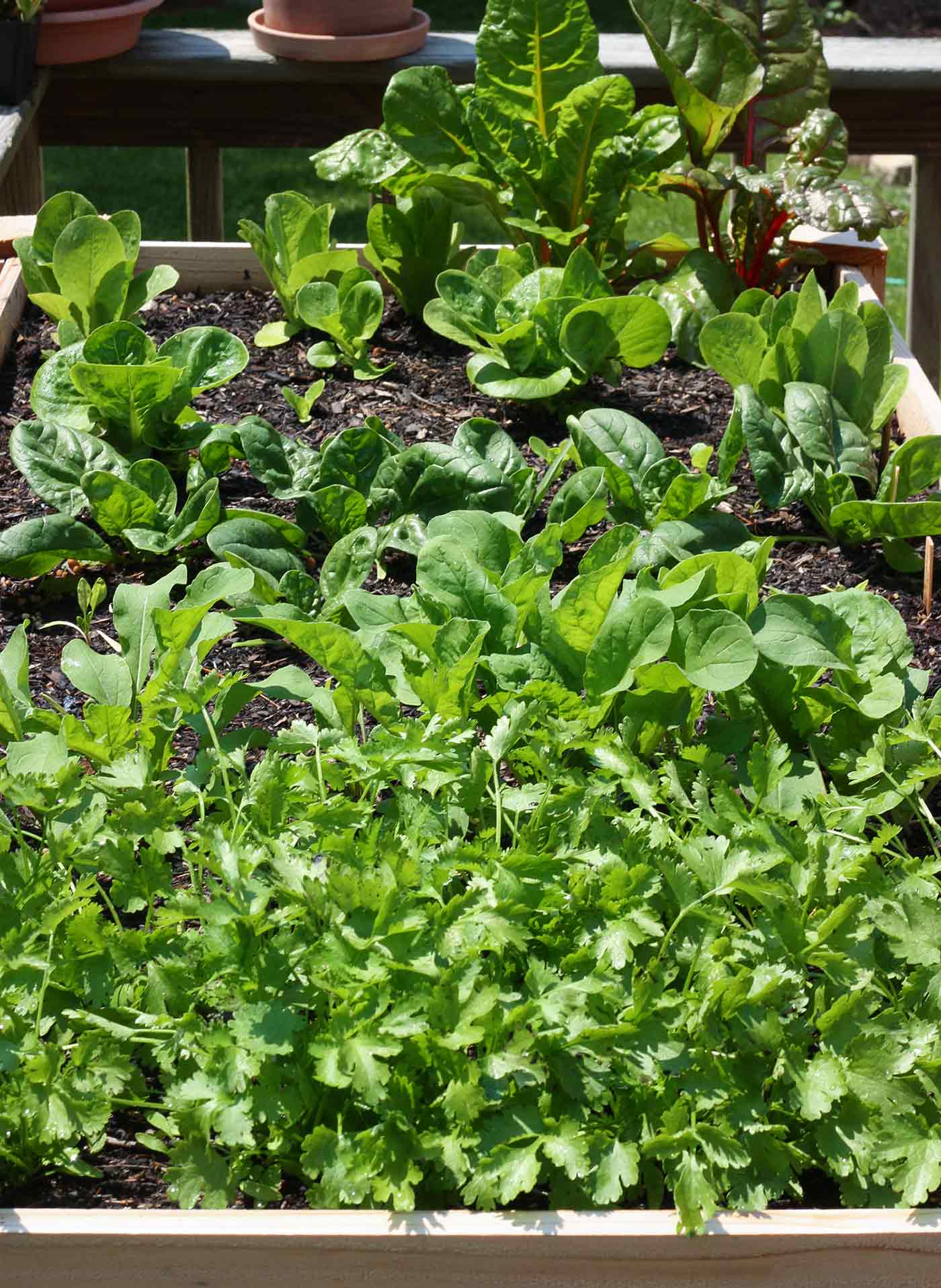
Advantages of growing cilantro in the ground: One particular advantage of growing cilantro in the ground occurs when you’re maintaining the plants to let them bolt and go to seed.
While the young, leafy green plant is compact and slightly bushy, its seed-producing self is tall and spindly, with wobbly stems everywhere. The short leaf stems sprout tall to produce flower heads and, eventually, seeds. These stems can be several feet tall.
The leafy plant will not need staking support but the stem-y seed heads might need some wrangling so they don’t sprawl over the edge of their allotted plot.
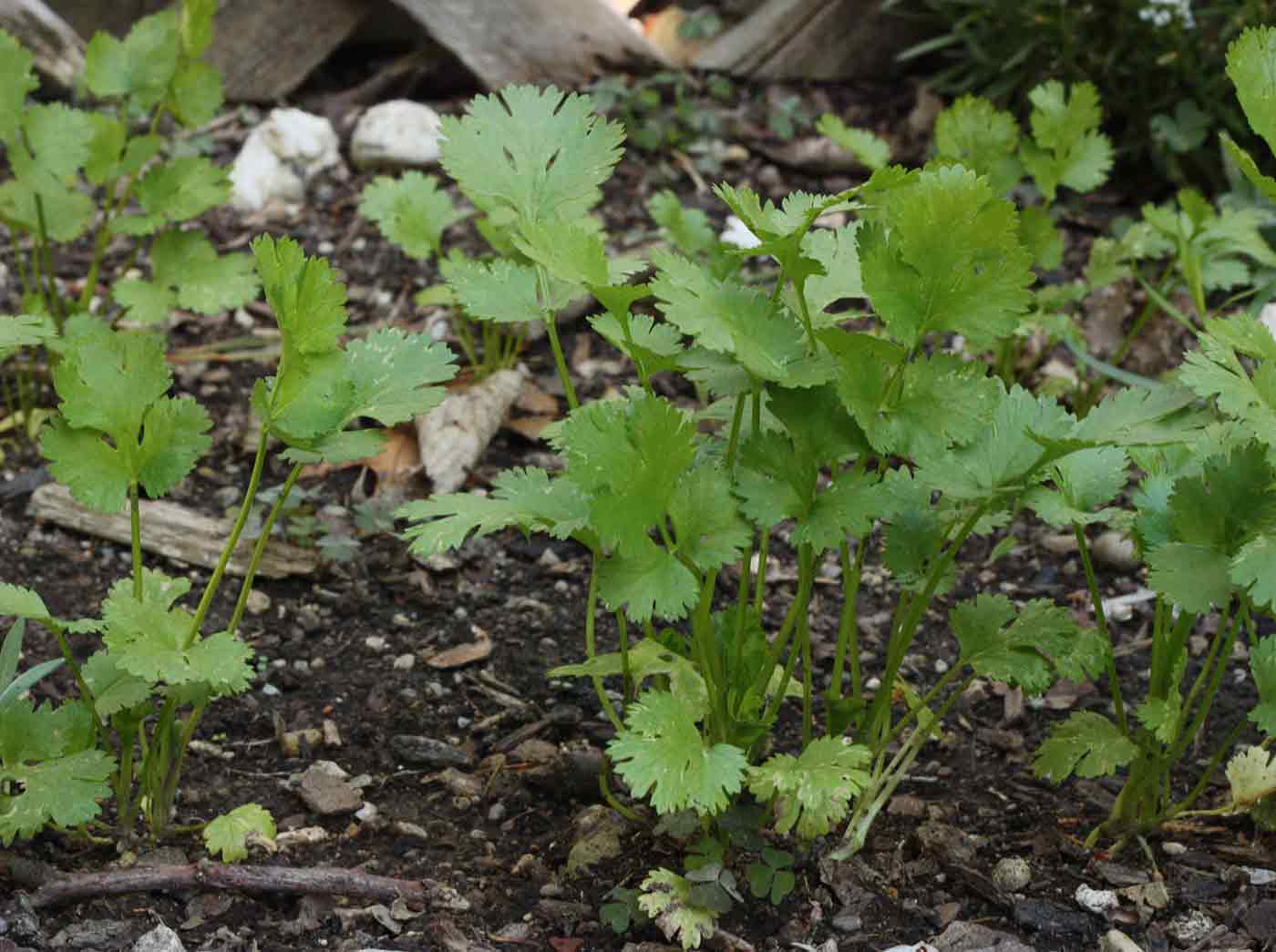
Cilantro plants produce a lot of seed, so there will be plenty to both collect as a spice and also to let fall to the ground for sprouting next spring. (You can also collect and save those seeds for planting elsewhere next spring.)
I do both, pots and ground. I love having a handy container of cilantro on the porch near the kitchen so I can pop out and grab a few stems while cooking. And I also love to have an abundance of young green seeds and dried brown seeds later in the summer.
How to Grow Cilantro from Seed
The great news for the gardener is that cilantro’s seeds do not have to be started indoors. Cilantro is quick to germinate and a fast grower, so as soon as the weather warms reasonably reliably — when most days reach the upper 50s and above, and the threat of snow is past — you can seed your garden.
If you want to take advantage of cilantro’s full lifecycle — that is, all the way through seed production — choose a spot that you can devote to the plants all summer long, as mentioned above.
In other words, don’t plant or seed cilantro in front of something short and squat, or cilantro could block the summer sun.
For easy mass seeding, use a hand trowel to dig a 1″ deep trench/row. Space rows 6-8″ apart.
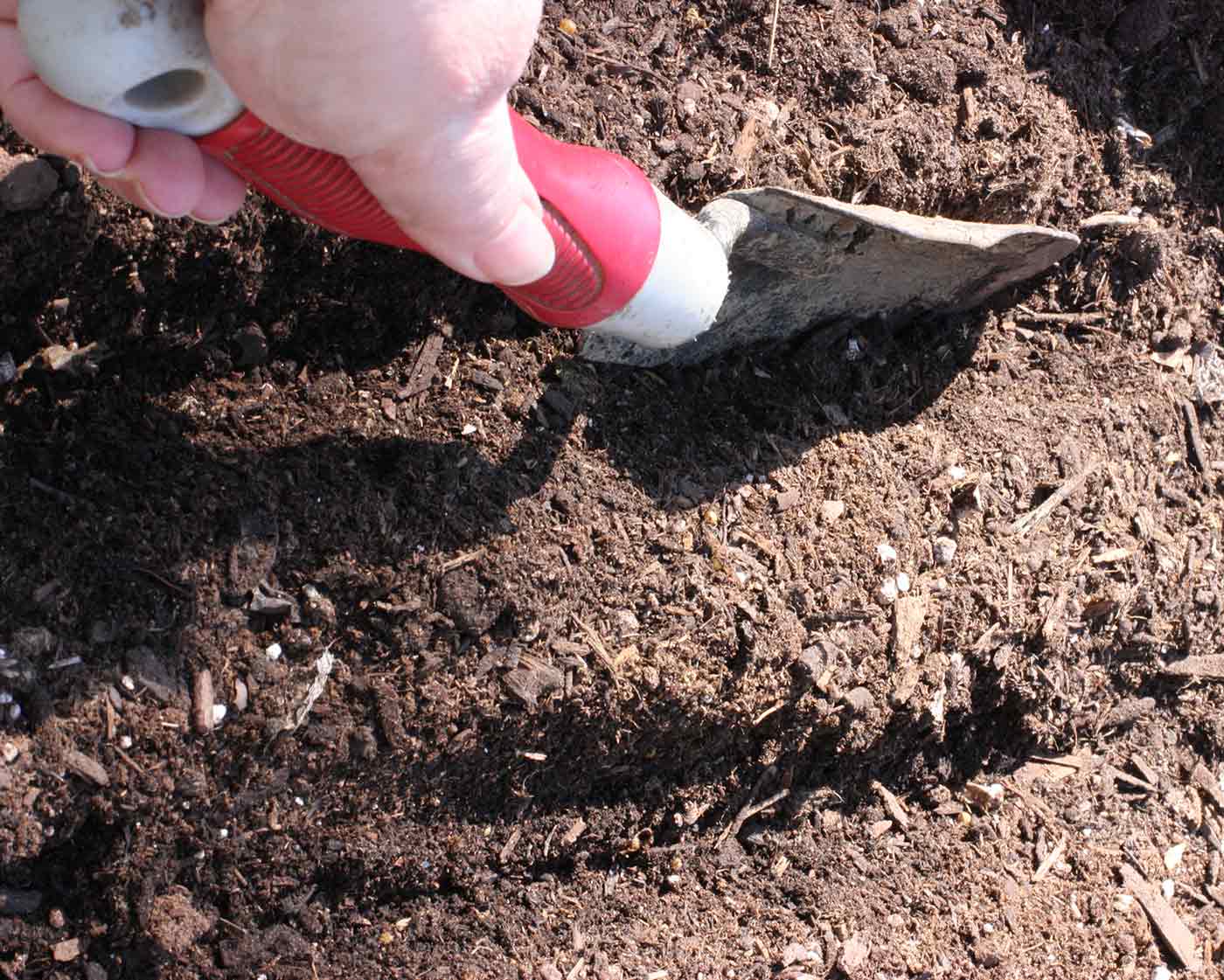
Dried coriander seeds are nice and substantial and easy to handle.
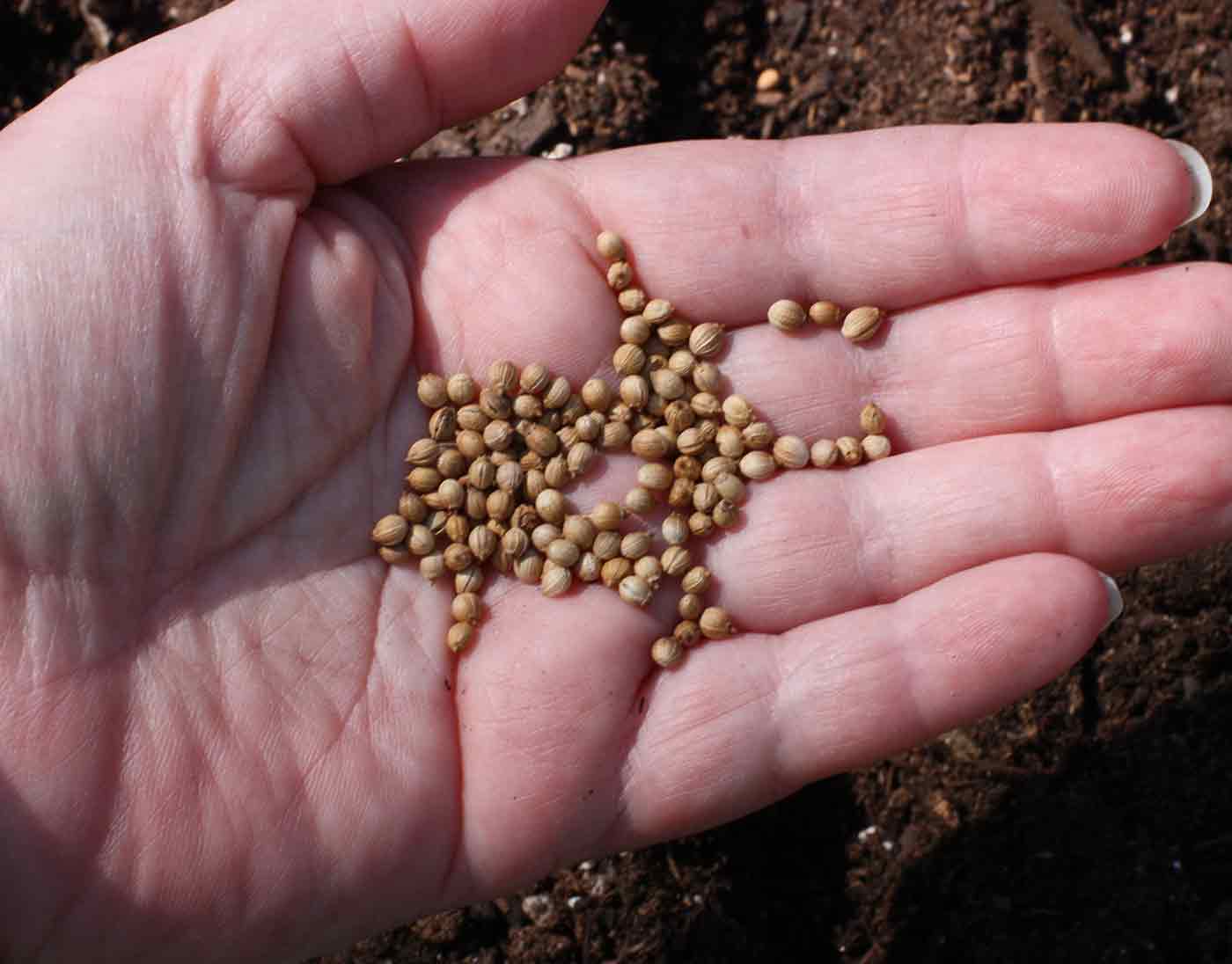
Drop seeds into the trench about 4-6″ apart. Cover over with soil and press down to firm.
Water thoroughly, with a light hand: use a watering can with a rose, or hose with a nozzle set to its most gentle shower, so that you don’t dislodge the seeds.
Keep the soil relatively moist. The seeds should sprout within a week.

The plants will grow very fast and bush out quickly in tender, round-ish, lobed leaves.
How to Care for Cilantro
Assuming a decent soil mix, cilantro’s primary needs are cool temps, sunlight, and water. You can’t do much about the first, but the other two are easier to control.
Having sowed coriander seeds in a sunny or mostly spot, your task will be to keep the soil moist. Not soaked and puddled. But well-watered and drained throughout its short growing season.
I never fertilize cilantro, although you certainly can if the soil available to you was less than optimal. Use a standard fertilizer mix or well-diluted fish emulsion on the soil only.
How to Harvest Cilantro
Cilantro is what’s known in old-fashioned terms as a “cut and come again” herb meaning that you don’t have to pull the entire plant all at once.
If you need just a little for your homemade guacamole, for example, you can simply use scissors to cut off one or two stems and leave the rest of the plant to continue to grow and thrive.
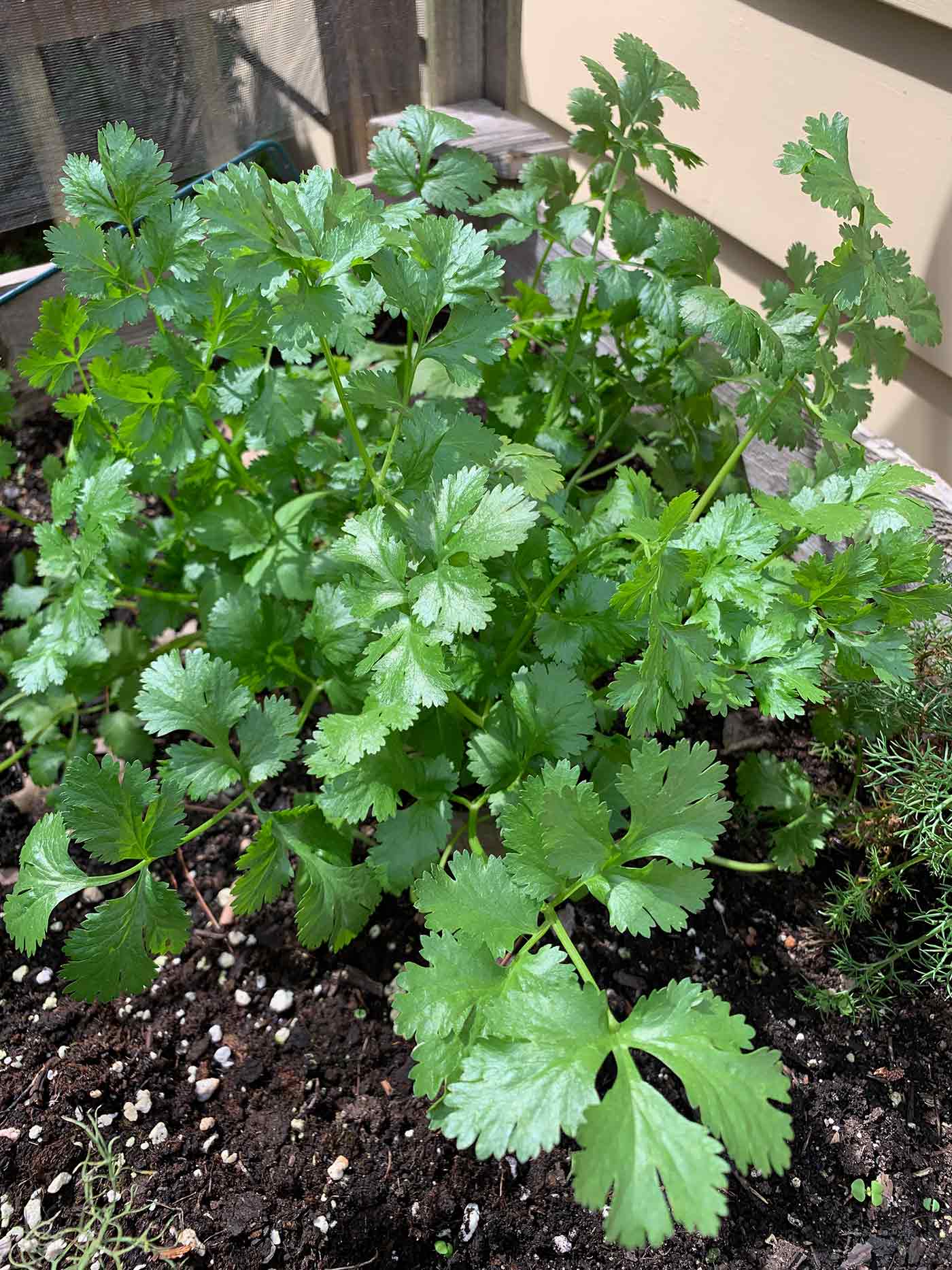
Both the leaves and stems are edible. The thin stem that attaches the leaf to the larger stalk can be chopped up raw with the leaves, without any worry of weird textures.
The thicker primary leaf stalk can be chopped up and sautéed, if desired, to add a more intense cilantro flavoring to a dish.
Brown Coriander Seeds vs. Green Coriander Seeds
The seeds of the cilantro plant are extra interesting because they’re edible in two stages of their development: green (young) and brown (dried).
When picked green, coriander seeds are tender and verdant (and not grindable into a powder). Toss them uncooked into green salads and rice dishes or, my favorite, as part of a pickling brine (see my recipe for Pickled Sweety Drops on my food blog, SoupAddict).

Their flavors are fresh, astringent, and slightly citrusy. Very bright and summery. Texture-wise, it’s like biting into a small pea.
I’ve never seen them for sale anywhere, but I would guess they could be available at certain farmers’ markets in restaurant-heavy cities. Note that I’ve seen packages of seeds labeled “Green Coriander” in stores, but they’re always dried.
Brown coriander seeds have been dried on the plant before harvesting. They’re a light brown color with funky ridges and are used as a spice and to replant the next growing season. They last a long time in an airtight container.
You can grind them into powder (as-is or by first dry-toasting in a hot pan for more intense flavor). Indian cuisine often uses them whole, sautéing them in oil with other spices before mixing into the dish.

If a recipe calls simply for whole or ground “coriander,” it’s referring to the dried, brown seed, not the tender green seed.
Succession Seeding
The one bummer about growing cilantro is that, because it’s a distinctly cool weather plant, its leaf harvest does not coincide with other mid-to-late summer vegetables for things like homemade versions of salsa and guacamole.
There is one thing you can try, though: spread out your seed sowing in groups, leaving two weeks in between each, with a final sowing in mid-June.
This technique will work only at the mercy of Mother Nature. Hopefully, the leafy green stage will coincide with a stretch of forgiving temps in the low 80s max, so that you can get one harvest that includes tomatoes, early chile peppers, onions and cilantro, before the plant bolts.
For this exercise, I highly recommend planting your cilantro in a location that gets partial shade, or where you can drop a shade cloth between the sun and the plants during the heat of intense days.
You can also try a late season seeding in September or October, to catch the last of the tomatoes and chile peppers. (Unfortunately, here in 6b, our Septembers and Octobers often have long stretches in the 90s, so this doesn’t work for me, but it might for you!)
I usually plant my cilantro in my custom garden bench, which is outfitted with a back-drop that I can pull up and over the top of the bench, for sun- and heat-sensitive plants like cilantro and lettuce. This usually extends leaf production by a few weeks.

I’ve also had good success with one of the slow-bolting varieties, Calypso or Slo-Bolt.
Apologies to the folx who dislike cilantro because of its soapy taste. The soapy flavor, by the way, is caused by olfactory receptor genes heightening the soap-flavored aldehydes found in cilantro leaves.
I would still encourage you to grow cilantro for the coriander seeds, which I hear do not have the soap problem.
Here’s to this lovely, herbaceous, easy-growing herb!


 Welcome! I'm Karen, Chief Gardener, Tool Cleaner, Tomato Pruner, and Cabbage Worm Picker-Offer.
Welcome! I'm Karen, Chief Gardener, Tool Cleaner, Tomato Pruner, and Cabbage Worm Picker-Offer.
But why does oregano taste soapy?
I don’t know. It tastes peppery to me.